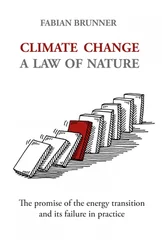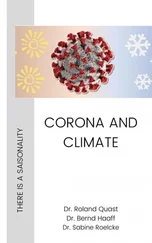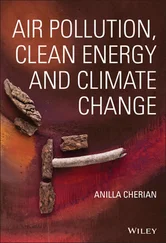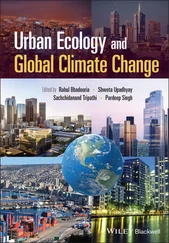Finally, in Chapter 13Shaw et al. analyze the impact of weather‐related variables on economic activity for 12 sectors of the US economy, including retail, forestry, agriculture, manufacturing, construction, and finance. They use a nonlinear framework to show that increases in temperature improve economic outcomes up to a threshold temperature where economic activity is then negatively affected. Results are particularly strong for construction, forestry, and mining.
This book focuses on the impacts of changes in extreme weather in a warming climate because this is the principal way that climate change directly affects human systems. Climate change impacts on agriculture are particularly apparent, and many of these chapters reflect this. The book is intended to survey topics and methods and is by no means a complete list of the impacts of extreme weather. Readers will find that some of these methods can be transferred from the applications in this book to other climate change impact topics in their own interest.
This book is dedicated to the memory of Professor Anthony Janetos. Tony was an enthusiastic supporter of this book and recognized the urgent need to bring physical and social climate scientists together.
Federico CastilloMichael WehnerDáithí A. Stone
1 Field, C. B., D.J. Barros, V. R., D.J. Dokken, D. J., K.J. Mach, K. J., M.D. Mastrandrea, M. D., T.E. Bilir, T. E., Chatterjee, M., K.L. Ebi, K. L., Y.O. Estrada, Y. O., R.C. Genova, R. C., Girma, B., Kissel, E. S., Levy, A. N., MacCracken, S., Mastrandrea, P. R., & White, L. L. (Eds.) (2014). Climate change 2014: Impacts, adaptation, and vulnerability. Part A: Global and sectoral aspects. Contribution of Working Group II to the Fifth Assessment Report of the Intergovernmental Panel on Climate Change. Cambridge University Press.
2 Guirguis, K., Gershunov, A., Tardy, A., & Basu, R. (2014). The impact of recent heat waves on human health in California. Journal of Applied Meteorology and Climatology, 53(January), 3–19.
3 Houghton, J. T., Meira Fillo, L. G., Callander, B. A., Harris, N., A. Kattenberg, A., & Maskell, K. (Eds.). (1996). Climate change 1995: The science of climate change. Contribution of Working Group I to the Second Assessment Report of the Intergovernmental Panel on Climate Change. Cambridge University.
4 Hugo, G. (2011). Lessons from past forced resettlement for climate change migration. In E. Piguet, A. Pecoud, & P. De Guchteneire (Eds.), Migration and climate change (pp. 260–288). Cambridge University Press.
5 Jay, A., Reidmiller, D. R., Avery, C. W., Barrie, D., DeAngelo, B. J., Dave, A., M. Dzaugis, M., M. Kolian, M., Lewis, K. L. M., Reeves, K., & Winner, D. (2018). Overview. In D. R. Reidmiller, C. W. Avery, D. R. Easterling, K. E. Kunkel, K. L. M. Lewis, T. K. Maycock, & B. C. Stewart (Eds.), Impacts, risks, and adaptation in the United States: Fourth National Climate Assessment (pp. 33–71). U.S. Global Change Research Program.
6 Landry, C. E., Okmyung, B., Hindsley, P., Whitehead, J. C., & Wilson, K. (2007). Going home: Evacuation‐migration decisions of Hurricane Katrina survivors. Southern Economic Journal, 74(2), 326–343.
7 Oppenheimer, M., Campos, M., J. Warren, J., G. Luber Birkmann, G., B. O'Neill, B., & Takahashi, K. (2014). Emerging risks and key vulnerabilities. In C. B. Field, V. R. Barros, D. U. Kokken, K. J. March, M. D. Mastrandrea, T. E. Bilir, M. Chatterjee, K. L. Ebi, Y. O. Estrada, R. C. Genova, B. Girma, E. S. Kissel, A. N. Levy, S. MacCracken, M. D. Mastrandrea, & L. L. White (Eds.), Climate change 2014: Impacts, adaptation, and vulnerability. Part A: Global and sectoral aspects. Contribution of Working Group II to the Fifth Assessment Report of the Intergovernmental Panel on Climate Change (pp. 1039–1099). Cambridge University Press.
8 Ostro, B. D., Roth, L. A., Green, R. S., & Basu, R. (2009). Estimating the mortality of effect of the July 2006 California heat wave. Environmental Research, 109(5), 614–619.
9 Piguet, E., Pecoud, A., & De Guchteneire, P. (Eds.). (2011). Migration and climate change. Cambridge University Press.
10 Stoecklin‐Marois, M., Hennessy‐Burt, T., Mitchell, D., & Schenker, M. (2013). Heat‐related illness knowledge and practices among California hired farm workers in the Micasa Study. Industrial Health, 51, 47–55.
11 Wuebbles, D. J., D. R. Easterling, D. R., K. Hayhoe, K., T. Knutson, T., Loop, R. E., Kossin, J. P., Kunkel, K. E., LeGrande, A. N., Mears, C., Sweet, W. V., Taylor, P. C., Vose, R. S., & Wehner, M. F. (2017). Our globally changing climate. In D. J. Wuebbles, D. W. Fahey, K. A. Hibbard, D. J. Dokken, B. C. Stewart, & T. K. Maycock (Eds.), Climate science special report: Fourth National Climate Assessment (pp. 37–22) U.S. Global Change Research Program.
Support from the National Science Foundation project “EaSM Advancing Extreme Value Analysis of High Impact Climate Change and Weather Events,” No. 1243333. and the Regional and Global Model Analysis (RGMA) program in the Biological and Environmental Research division of the Office of Science, United States Department of Energy is gratefully acknowledged by the editors of this book.
1 Synthesizing Observed Impacts of Extreme Weather Events Across Systems
Dáithà A. Stone
Dáithà A. Stone works at Global Climate Adaptation Partnership in the United Kingdom and Latvia
This chapter discusses synthesis assessments of the impacts of extreme weather across multiple types of impacts. It considers existing global synthesis efforts rather than developing a new analysis based on other chapters in this book. It includes discussion of the motivation for such assessments, challenges in performing syntheses related to extremes, and possible methods for assembling a synthesis. The focus is on the detection and attribution of impacts during the past half‐century, but implications for predicting and, ultimately, documenting future changes in risk are also discussed. The only synthesis assessment of past impacts related to extreme weather is reviewed, noting that its shortcomings can be overcome only through further developments in a number of areas, including monitoring and process understanding.
1.1. A REASON FOR CONCERN
In 1992, the nations of earth agreed to “stabilization of greenhouse gas concentrations in the atmosphere at a level that would prevent dangerous anthropogenic interference with the climate system” according to the prescriptions of the United Nations Framework Convention on Climate Change (UNFCCC) (United Nations, 1992). The meaning of “dangerous” was not specifically defined, but it was made clear that action should be taken so as “to allow ecosystems to adapt naturally to climate change, to ensure that food production is not threatened and to enable economic development to proceed in a sustainable manner.” Since 1992, the world’s nations have continued developing the UNFCCC, and more recently they noted “the importance of averting, minimizing and addressing loss and damage associated with the adverse effects of climate change, including extreme weather events …” (United Nations, 2015, p. 26). In doing so, the countries recognized that “adverse effects of climate change” will impose “loss and damage,” but they remained silent on the conditions under which such adverse effects, loss, and damage might be considered “dangerous.” Such conditions might be reached, for instance, once a certain threshold of damage is achieved or if the rate of increase of loss becomes too high. The nature of those conditions might be different for the viability of the insurance industry, the stability of an economy, the reliability of a food supply, or the steadiness of a political system. Hence, whatever might ultimately be designated as dangerous, it will need to be informed by assessment of impacts around the world and across natural, managed, and human systems. This assessment not only needs to note the global and cross‐system averages but also the existence of any localized but transformative impacts, such as might occur around an ice‐free Arctic Ocean, as well as disparities in impacts, for instance between wealthy and poor populations. In this chapter we will refer to such an assessment as a synthesis.
Читать дальше












